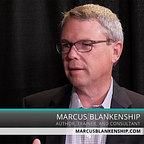The uneven distribution of onboarding
Onboarding might be defined as, “A process of experimentation necessary to learn the unspoken rules, expectations, and norms in a new environment.”
Never heard that before? I’m not surprised, as I just made it up. But, let me explain it.
- It’s a process — It takes a lot longer than you think, and doesn’t move at a steady pace. And it’s not finished when all the HR boxes are checked, or the first PR is merged, or people are productive. Let me butcher a famous William Gibson quote: “The onboarding is happening — it’s just not very evenly distributed.” It would be nice to know how far I am along, but truthfully, no one knows. Unexpected situations arise each day, forcing me back into onboarding mode. I suspect (hope?) in a year there will undoubtedly be dramatically fewer.
- It’s experimentation — I’m currently onboarding into a company for the first time in 24-years, and I’ve learned more by accidentally breaking the “rules” than any of the HR videos. The handbook might not represent how things are done, at least not by the team you’re on. We find the boundaries by bumping into them. We also learn a great deal about the system of people by observing how the system reacts when rules are broken. This teaches us more about the culture than any employee handbook could.
- There are unspoken rules, expectations, and norms — “The most important thing to know is what they don’t tell you.” — me. Imagine you were learning piano from Beethoven or chess from Bobby Fischer. Just because they can play masterfully doesn’t mean they realize how they play. In the same way, no matter how hard you try you’ll never write down all the things someone needs to know to be a part of the team. This doesn’t mean you shouldn’t try, or that you should just imagine people will “figure it out” — having a structure is really important when onboarding. But, don’t pretend it’s complete. Instead, acknowledge that people will have to figure out the unspoken expectations for themselves, and give them an ‘onboarding buddy’ to ask questions of along the way. You get bonus points for asking them about what unspoken rules they see in your 1–1s, so you get a fresh perspective.
- It applies to any new environment — Onboarding isn’t just for new hires. Each time you change teams or get a promotion, you’re going through the onboarding process. With the number of organizational changes some people experience, I wonder if people feel trapped in “Eternal Onboarding.” In addition, when you get a new boss, you will start the onboarding process over again. I think this is true no matter if your boss has worked at the company for 20 years or 20 minutes. You have to go through the process of experimentation necessary to learn the unspoken rules, expectations, and norms in your new environment.
I realize this might not be conventional wisdom about onboarding, but then again, maybe this helps you see onboarding in a new light.
Remember, being “onboarded” takes longer than you think, is more stressful than you remember, and takes tremendous effort.
While you can make it suck less, I doubt you can ever make the process enjoyable. You’ll go a long way simply by not pretending that it is.
Stay curious,
Marcus
The post The uneven distribution of onboarding appeared first on Marcus Blankenship.
